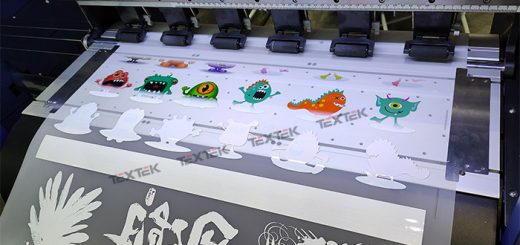How does DTG Printing Work?
What is DTG printing?
DTG (direct to garment) stands for “direct to garment” printing. Using DTG technology, a printer applies ink directly to an already manufactured garment. Following a pre-established design. Its operation, without going into detail, is similar to how an inkjet printer prints on paper. The only difference is the support, which in this case is a T-shirt, sweatshirt, trousers or coat.
The selected design is printed directly onto the garment, usually with water-based inks, which are absorbed by the fibres that make up the garment.
This method should not be confused with screen printing, which is a printing technique that uses completely different processes and working methods.
To carry out screen printing, a template is created with the design to be reproduced on a stretched mesh. Through this mesh, the design is printed colour by colour directly onto the garment. This means that the more colours the design needs, the more complex the process becomes and therefore the more expensive the final product.
With DTG solutions, the entire design is printed on the garment in a single pass, regardless of the number of colours required. With methods such as screen printing, a separate pass and screen is required for each individual colour. As each screen must be created and set up individually, this increases time and cost.
While the results of screen printing are stellar for shirts with a limited colour palette, it makes designs with many colours more expensive and, in the worst case, virtually impossible.
How does it work?
The graphics are printed directly on the desired clothing by a machine. In fact, a DTG printer works like an inkjet printer in your home or office, but instead of paper, it uses clothes or fabric. Using a digital printing method, DTG printing sprays ink onto the fabric in a matter of minutes. Direct garment printers are available for T-shirts, sweatshirts, posters, banners, and much more! Most direct garment printers require RIP. Most DTG presses require RIP software.
It is extremely important that the t-shirts you use have been pre-processed before you begin the direct garment printing process. If you skip this critical step, you run the risk of a low-quality print. Next, the design is usually based on white ink and placed underneath the entire artwork to make it pop, so set up your DTG machine and print the white base. Now you can go ahead and start printing your CYMK colors. Unlike DTS printing, you don’t have to separate the colors and print them one by one. Finally, you solidify your T-shirt and let it set.
Here it is! Your T-shirts should have high quality artwork and be printed exactly where you specify.
Why Should I Choose DTG vs Other Printing Methods?
Each textile printing method has its own advantages and disadvantages. Before deciding which way to go, analyse in detail all aspects of your printing project and visualise the final look of the garment.
In the case of DTG technologies and screen printing. Both printing methods produce quality prints, although depending on your project, one method may make more sense than the other.
Economical
DTG printing: For small batches or one-offs, DTG is the option for you. Garment printers work like a normal printer and can only print one garment at a time. Since the process does not require the creation of a screen, a single garment is much cheaper this way.
Screen printing: For large batches with a single colour and simple design, screen printing is the way to go. A special screen template should be created for the design, so the more garments the better it makes it worthwhile.
Design
DTG printing: Because DTG printing is more precise than screen printing, you can achieve designs or even photographs with much more detail. There are fewer limitations on the colour of a design when using a DTG printer.
Screen printing: Screen printed items require a special stencil for each design. The more intricate and colourful the design, the more stencils are needed for a single garment. It is best to keep your design simple if you go with the screen printing method.
Colour capabilities
DTG printing: Because DTG printing does not use a stencil, ink is applied in thinner quantities to achieve the high detail of many desired designs or photographs. A DTG printer works in the same way as a normal printer by applying all inks at the same time. When printing on fabric colours other than white, a white undercoat is included to allow the colours to stand out more.
Screen printing: You can only print: In colour at the same time and per stencil when screen printing. This means that for every colour you want, a new stencil must be made, which means more time and money. Screen printing is the best option for high levels of vibrancy as the inks are applied thicker than DTG inks.








